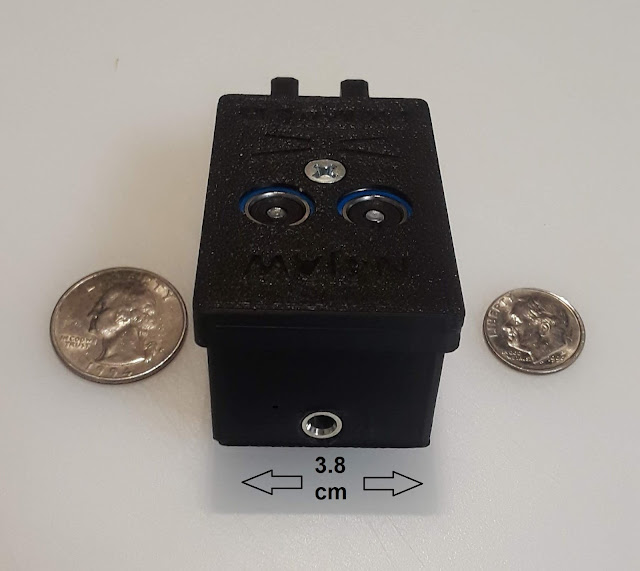There is a CW MOUSE in my POTA Bag
The CWmouse Paddle
There is a CW Mouse in my POTA Bag and you don't need CHEESE to feed it. In late December of last year a mutual follower on Mastodon Radio asked me if I would try out and review his NEW concept 3D Printed Iambic Paddle he had produced. I obliged and said yes.
First let me touch on MY EXPERIENCES with 3D printed Ham Radio products. I'm a pounder. It goes back to my early days in the 60's as a Novice. Pounding doesn't bode well with 3D printed paddles.
When I first got involved in operating Morse Code with Parks on the Air, I wasn't confident with my CW skills so instead of purchasing an expensive paddle so I opted for an inexpensive and reliable 3D printed paddle.
I purchased several 3D printed paddles in mid to late 2021 for POTA activations. Noting against any of the people who produced the paddles I purchased but I have found that continued use of 3D printed material in a warm environment does not hold up long term. Most of the paddle component of these 3D printed paddles became soft and snapped at the point where the paddles join to interior paddles boards. Today, I only have one of the four 3D printed paddles left. I love how they all felt and operated but wa sadden that they failed. The producer of one of those replaced the paddles but the replacement failed, too.
MY EXPERIENCES with those paddles was the paddle portions were too long and stuck out too far from the base of the total paddle and or were too thin. FOR ME, it was difficult to create settings where I could gently press paddles in order not to produce and send extra, unrecognized characters.
Here is what I think about the 3D printed Iambic Paddle "CWmouse" produced by Mike KN6FQM.
 |
| CW Mouse |
The best part of this paddle for me was the shorten length of the paddles from the base of the enclosure and the thickness of the two paddles. The paddles don't stick out far and they are thicker than any other 3D printed paddles I've owned.
The other is the length, width and height of the paddle. It is a next fit in my chubby hands and knubby fingers. The are no screws or other metal contacts protruding out from the sides of the enclosure which might cause sending extra characters or getting bit by common currents. For me, I call it the "Goldilocks" fit. Not too long, not too tall, not too wide and definitely not too heavy. JUST RIGHT for MY hands.
 |
| Bottom View |
 |
| Rear View |
 |
| Side View |
I took advantage of a mild weather day on January 29, 2025 to do a Parks on the Air (POTA) activation at US-7956 Beargrass Creek State Nature Preserve to put the CW Mouse through its paces with my YouKits HB-1B QRP transceiver with my 40 - 15 meter linked dipole. With snow and ice still prominent around the grounds I had several visitors during my activation.

I was able to make 18 Morse Code QSOs with the CW Mouse paddle before the weather became a wee bit cold. Here's some of those QSOs.
Here are the features of my now favorite POTA activation paddles.
- four sealed ball bearings for smooth movement
- sealed micro-switches instead of contacts
- textured top and bottom surfaces
- enclosing volume: L:74mm/2.9in x W:36mm/1.4in x H:28mm/1.1in
- Paddle weighting only 45g/1.5oz.
To find out more and order the CW Mouse, here's the link:
https://cwmouse.com/order/
.png)





.png)
Great blog post Jim! I'm a pounder too, and actually had a straight key (Bencher RJ-1) come apart on me mid-QSO! I also slap my paddles around, which is why I use the N3ZN ZN-5 and ZN-QRP paddles, because they are built like tanks! I am trying to make myself be more gentle on the paddles, but the excitement of making a contact sometimes overrides that. 73, Howard, AC4FS
ReplyDelete